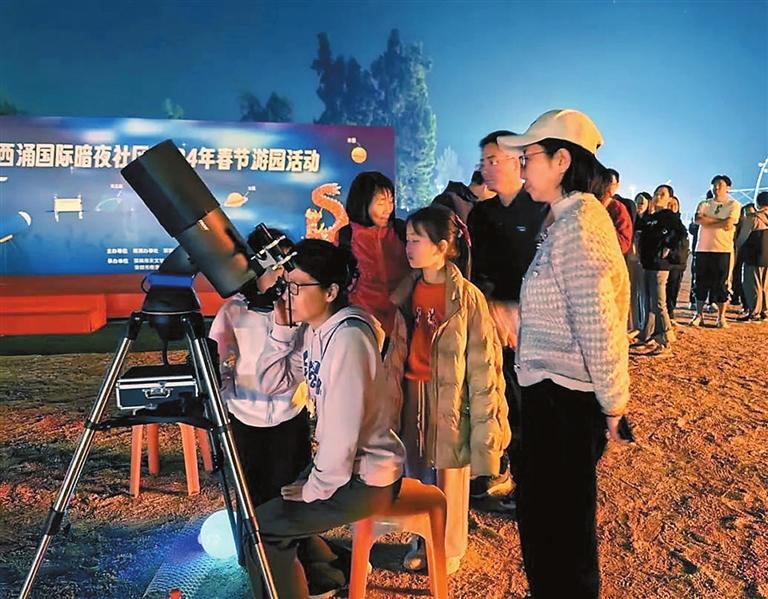
Chen Siqi vankochensq@163.com THE 2024 Messier Marathon observation event in Shenzhen will kick off Friday night. From 8 p.m. to 11 p.m., the Shenzhen Astronomical Observatory will try to detect the 110 objects from the Messier Catalog in that single night. Viewers can watch livestreaming on the “深圳天文” WeChat Channel. In addition, the observatory will set up three public observation sites in the Xichong International Dark Sky Community, namely the entrance of Xichong Star Hotel (西涌星空酒店), a grassy area in Lego Playground (力高乐园), and an open space near the Yashan Village transformer substation (芽山村变电站). Each location will be installed with professional equipment and instructors will be there to assist those keen on stargazing. Visitors are also encouraged to bring their own devices. Access to the venues and equipment is free for all attendees. The Messier Marathon is a favorite challenge among amateur and seasoned astronomers. During the marathon, participants aim to spot all 110 deep space objects (galaxies, nebulae, star clusters) listed in the Messier Catalog in one night. The objects were first detected by French astronomer Charles Messier (1730-1817) when searching for comets in the 18th century. He first found 103 of them, and the list was expanded to 110 by later explorers, which were formulated into the Messier Catalog. The best time to observe these objects is in a short few weeks from mid-March to early April. During this time, the sun’s trajectory exposes a region less with Messier objects, offering optimal viewing opportunities for observers on Earth. And to observe the more than 100 objects in just around 11 hours of darkness is a challenge, meaning observers have to locate and observe one in just five minutes. | 
